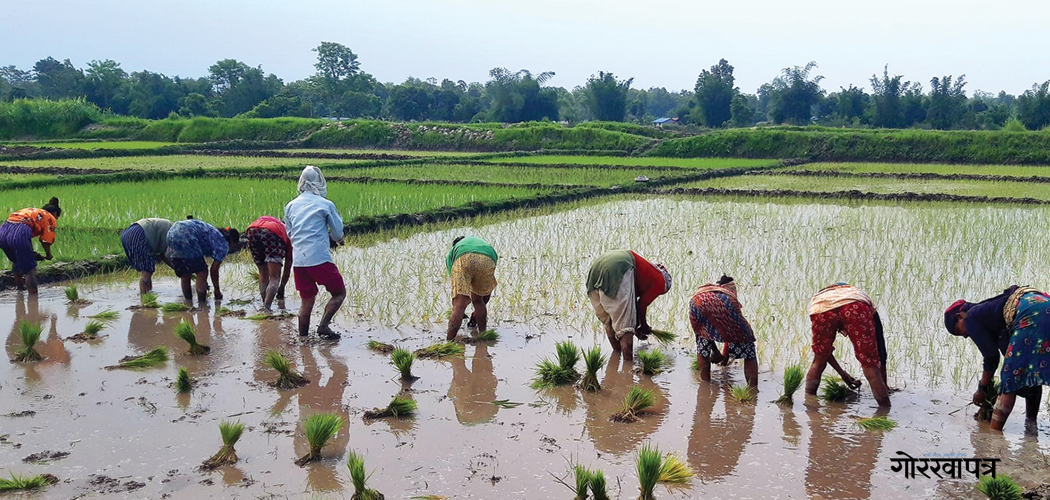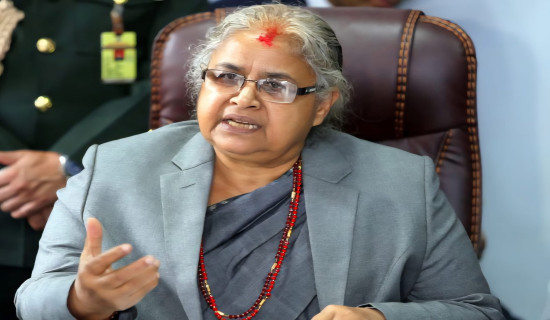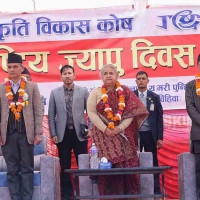- Friday, 5 December 2025
Paddy plantation reaches 86%
By A Staff Reporter
Kathmandu, Aug. 5: Paddy plantation has reached about 86.3 per cent of the total paddy fields across the country as of Aug 1, 2022.
According to the statistics of the Department of Agriculture under the Ministry of Agriculture and Livestock Development, paddy plantation has been carried out only in 1.29 million hectares out of 1.5 million hectares of paddy fields.
By now, paddy plantation has completed in the largest area of paddy field in Sudurpaschim Province followed by Gandaki and Province 1.
In Sudurpashchim Province, paddy plantation has completed in 92.8 per cent (165,339 hectares) while 91.8 per cent (92,126 hectares) in Gandaki and 88.4 per cent (301,419 hectares) of paddy fields in Province 1 by Monday.
Paddy is grown in around 178,167 hectares in the Sudurpashchim Province, 100,310 hectares in Gandaki Province and 340,829 hectares in Province 1.
Paddy plantation has completed in 87.8 per cent (105,916 hectares) in Bagmati, 84.8 per cent (271,528 hectares) in Lumbini, 81.9 per cent (332,144 hectares) in Madhes Province and 78.3 per cent (30,461 hectares) in Karnali Province.
The paddy plantation is lower during the review period as compared to the same period last fiscal year.
The paddy plantation had reached almost 95 per cent during the same period last fiscal year.
According to the Department of Agriculture, lack of adequate rainfall since last week of the month of Asar in many places has affected plantation this year.
However, the paddy plantation has been gaining momentum across the country this week.
The Department has projected paddy plantation at 97 per cent of the last year.
The short supply of chemical fertilisers in the month of Asar also affected the plantation this year more than last year.
The paddy plantation has been completed in many districts, including Kathmandu, Bhaktapur, Lalitpur, Rolpa, and Palpa so far. Similarly, the paddy plantation has completed 95 per cent in Solukhumbu, 99 per cent in Syangja, 95 per cent in Arghakhanchi, 95 per cent in Rukum (East), 98 per cent in Nawalparasi, 99 per cent in Jumla and 98 per cent in Humla.
However, there are few districts such as Sankhuwasabha, Panchthar and Dhankuta where plantation is far lower than other districts due to scanty rainfall.









-original-thumb.jpg)






